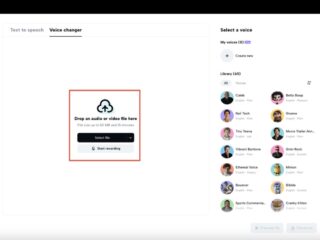
The digital age has ushered in significant transformations across various sectors, with higher education standing at the forefront of this change. Universities and colleges around the globe are rapidly evolving, not only to incorporate new technologies but also to meet the changing needs and expectations of a digitally savvy generation. This evolution is about rethinking the delivery, accessibility, and very nature of education. In this article, we explore the diverse ways in which higher education institutions are adapting to the digital age, marking a paradigm shift in the realm of academic learning and engagement.
Online Learning Platforms
One of the most noticeable adaptations in higher education is the emergence and growth of online learning platforms. These digital platforms have transcended geographical boundaries, making education more accessible to a global audience. They offer a range of courses and degree programs, catering to learners who need flexible schedules or cannot attend traditional on-campus classes. Through online platforms, higher education has become more inclusive, accommodating various learning styles and life circumstances. This trend diversifies the student body and enriches the learning experience by bringing together a wide range of perspectives.
Incorporating Digital Literacy into Curricula
In today’s digital-dominated era, the significance of digital literacy in higher education cannot be overstated. Universities and colleges are proactively embedding digital literacy into their curricula, recognizing its critical role in a student’s overall educational development. Courses across various disciplines, ranging from humanities to science and business, are increasingly including modules on digital competencies. For instance, programs like an MBA may integrate units on digital marketing, data analytics, or even offer cyber security MBA specializations, reflecting the diverse applications of digital skills. These courses aim to equip students with a broad range of digital abilities, including effective online communication, digital content creation, and understanding online data privacy and security. This comprehensive approach ensures that graduates are not just experts in their chosen fields but are also well-equipped to thrive in a digitally interconnected world.
Blended Learning Models
Blended learning models represent a harmonious fusion of online and traditional face-to-face teaching methods. This approach tailors to the modern learner, who benefits from both the flexibility of online resources and the engagement of in-person interactions. Blended learning allows students to access lectures and course materials online at their own pace while still participating in classroom discussions and activities. This hybrid model enhances learning outcomes by providing a diverse range of educational experiences and caters to different learning preferences.
Gamification of Learning
Gamification involves applying game-design elements in non-game contexts, like education, to make learning more engaging and motivating. Higher education institutions are increasingly using gamified systems to teach various subjects, where elements such as points, badges, and leaderboards are used to increase student engagement and motivation.

This approach has been particularly effective in subjects that traditionally have high levels of disengagement, turning tedious tasks into exciting challenges and making the learning process more enjoyable and rewarding.
Virtual and Augmented Reality in Education
The integration of Virtual Reality (VR) and Augmented Reality (AR) into higher education curricula is transforming the traditional learning environment. These technologies create immersive, interactive experiences that can significantly enhance understanding and retention of complex subjects. For instance, medical students can practice surgeries in a virtual environment, while history classes can explore ancient civilizations through AR. By simulating real-life scenarios, VR and AR make learning more engaging and effective, allowing students to explore concepts in a way that was previously impossible.
Big Data and Analytics in Education
Data analytics is reshaping how educational institutions make decisions and track progress. By analyzing large sets of data, universities can gain insights into student performance, learning outcomes, and even predict future trends. This information is invaluable in customizing teaching methods, improving student services, and enhancing overall institutional effectiveness. Big data tools also enable educators to identify at-risk students early and provide them with the necessary support, thereby improving retention rates and academic success.
Enhancing Research with Technology
Technology is revolutionizing the research landscape in higher education. Digital tools and resources have greatly expanded the scope and speed of academic research. Online databases and digital libraries provide researchers with easy access to a wealth of information. Advanced software tools for data analysis, simulation, and visualization are enabling more complex and sophisticated research projects. This technological advancement accelerates the pace of discovery and facilitates collaboration across disciplines and geographical boundaries, leading to more innovative and impactful research.
Strengthening Global Collaboration
Technology has made global collaboration in higher education more feasible and effective. Video conferencing tools, collaborative online platforms, and digital communication technologies have removed the physical barriers to international cooperation.

Students and educators can now participate in global classrooms, engage in cross-border research projects, and share knowledge with international peers with ease. This global network enriches the educational experience by exposing students to diverse perspectives, cultures, and ideas, preparing them for a globally interconnected world.
Conclusion
As we navigate through the digital age, the adaptability of higher education to technological advancements is not just beneficial but essential. The ways in which universities are incorporating digital tools and methodologies into their curricula, research, and administrative processes are pivotal in preparing students for a rapidly changing world. Accepting and implementing these changes is crucial for institutions to remain relevant and effective in fulfilling their educational missions. The future of higher education looks promising, with endless opportunities for innovation, collaboration, and growth. By continuing to integrate technology in meaningful ways, higher education institutions can ensure that they are not just keeping up with the times, but are also shaping the leaders and innovators of tomorrow.











